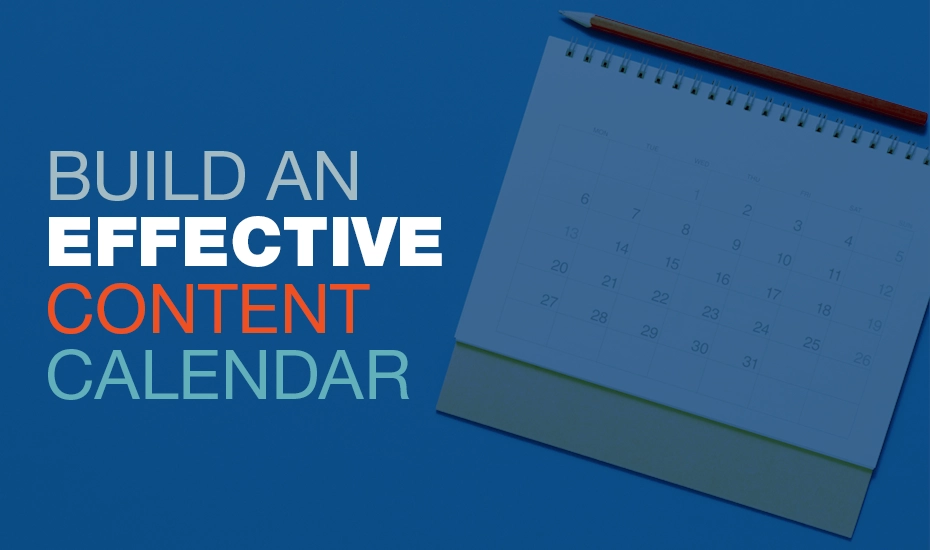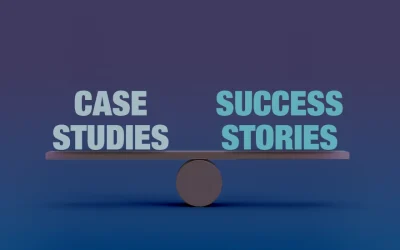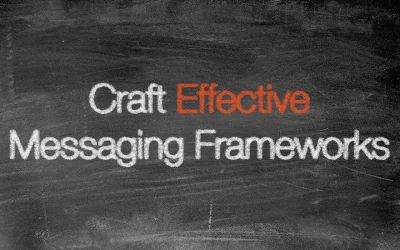Have you ever made a plan that went off track because of factors you couldn’t predict or control? Most people have experienced this at some point. It’s easy to think that making plans is futile because they don’t always work out.
Not everything in life goes our way but that doesn’t mean we shouldn’t plan. This is especially true in marketing. You need to have goals—and plans to hit those goals—so that everyone on your team is rowing the same way. Proper planning can give you clear direction and help you create more meaningful content your audience wants.
Once you have a B2B tech content marketing strategy, the next step is to create a content calendar. Over the years, I have created many content calendars. I’ve also talked with other peers, read many articles, and tried out different templates. I’ll share what I’ve seen, what has worked, and some tips to ensure your content marketing calendar is effective.
Content Calendar vs. Social Media Calendar vs. Editorial Calendar
Definitions matter. People use the terms content calendar, social media calendar, and editorial calendar interchangeably. They share a similar purpose, but these are different things with different scopes.
1. Content Calendar
A content calendar is your master plan. It is broader than a social or editorial calendar and can include all content your organization needs to create.
- Scope: All content types, including blogs, videos, social media posts, podcasts, white papers, eBooks, infographics, and any other content you plan to produce.
- Purpose: Serves as the big-picture overview of all the content schedules and the channels to distribute to.
2. Social Media Calendar
As its name indicates, a social media calendar deals with the posts you plan to distribute on social media platforms and their scheduled distribution dates.
- Scope: All social posts for each platform your company utilizes.
- Purpose: Helps coordinate what is being distributed on social media with the main content strategy.
3. Editorial Calendar
Editorial calendars are specifically for written content pieces.
- Scope: Articles, blogs, newsletters, press releases, and other larger written content pieces.
- Purpose: Plan topics, assign deliverables, and schedule publication dates to streamline the content creation process.
Which Type of Calendar Should You Use?
Generally speaking, all three calendar types should be utilized. If you are part of a smaller team, use one calendar that combines elements from all three. If you are part of a larger company with different teams for each function, you should have three calendars that sync.
That way, the social team can plan posts for important content releases, ensuring consistency between publications. Meanwhile, the content team can work with subject matter experts (SMEs) to organize and write blog posts.
Where to Set Up a Content Calendar
When deciding where to build your content calendar, there are some things to consider. First, you want it to be adaptable. You should be able to add information and edit the calendar as your needs change.
Second, it should be accessible to everyone on the content team. Third, it should be detailed enough to help plan and organize, but simple enough for people to understand it at a glance.
Our first recommendation on where to create your calendar would be your team’s primary project management tool. We use ClickUp (use this link for 10% off) internally, and it has many great features that make it very easy to plan, organize, and assign team members and deadlines.
ClickUp has premade templates that make it easy to get started, as well as automation that streamlines many of the manual aspects of managing a calendar. Airtable may also be a suitable tool for creating a content calendar.
If you don’t want to create your calendar in a project management tool, a very simple and free option is to use Google Sheets or Microsoft Excel. If you aren’t as familiar with these apps, it could be a bit challenging to get everything set up.
Here’s a simple content calendar template we built in Google Sheets. Feel free to make a copy to your own Google Drive to experiment with it.
How to Plan a Content Calendar
Planning a content calendar is not a project you do once a year. Your content should evolve and change as needed. You should do an annual plan, and then revisit and adjust it quarterly. The next question is where do you come up with the actual plan and topics?
There are a few different approaches to this. Asking subject matter experts (SMEs) is a good place to start, but that alone won’t be enough. Not because they won’t have good ideas, but because they won’t have a holistic view of what content you already have, where there are gaps, and what types of content you need to improve your overall search ranking.
Here’s a comprehensive plan to come up with new topics that will help you improve and hit your content goals.
1. Start with Keyword Research
Before actually researching, identify the keywords your website already ranks for. Look at the keywords that are in the top 10, top 20, and so on. Then, start researching to figure out what keywords you don’t rank for but should. A tool like Moz Keyword Planner, Semrush, or Ahrefs is necessary to make sure you are doing a thorough job.
If you’re doing this for the first time, you can see some faster results by looking for keywords that:
- Are important to your content strategy
- Have a lower difficulty score
- Have a slightly lower search volume
As you research keywords, pay attention to the search intent for the topics you plan to write about.
2. Review Competitor Websites
While you don’t want to copy everything your competitors are doing, it is important to see what content they prioritize. Specifically, analyze their content to determine what topics are working for them. Then, you can write a more thorough version of those articles or provide a different perspective on an industry challenge.
3. Brainstorm Topics
After completing your keyword research and analyzing competitors, brainstorm internally on different content titles for the various keywords you want to target. You can include SMEs in this phase to get their valuable input on what’s “hot” in the industry and get ideas for thought leadership content. Include key sales staff to see what prospects are saying, and what is valuable or frustrating with industry solutions.
Content titles don’t have to be exact at this point. They should give a feel for what the content will be about, pique interest, and focus on those most important keywords you found in the first step.
4. Set Up Content Pillars
As you’re creating content titles, you may see that some topics are related to a larger theme. That larger theme can become a content pillar. These are bigger topics that you can expand upon with smaller blogs as you go. Ideally, these pillars will be related to services or solutions that you offer your clients.
For example, a 3PL (Third-Party Logistics) company may have a pillar on task and inventory management, while a retail security company might have one on PCI compliance and security. Identifying pillars helps plan out content to cover the areas that are most important to your audience. It also helps demonstrate your breadth of understanding within these areas, which helps increase your credibility and build trust.
5. Decide on Types of Content for Your Topics
At this phase, you should have 20+ topics to write about. Take some time to determine what format the written content should be in. Some topics are perfectly suitable for a blog post, while others might be more in-depth and technical, like a white paper or case study.
Others might even be a good topic for a success story on how your services helped one of your clients solve a particular challenge. There could also be interesting topics that can be covered in a video series or a webinar, or a discussion on a podcast.
Something fun about content is that you can repurpose all of these pieces to make additional content from them. For example, an engaging video can become a how-to article, or vice versa. Be creative and think outside the box here.
Also, think about what channels are most suitable for the different types of content and make note of that as well in your planning.
6. Set Realistic Schedules and Due Dates
With a comprehensive list of content to create, start prioritizing them based on your goals. Some companies make a schedule for the whole year, but that can sometimes be challenging to maintain or stick to depending on your constraints. Try to be realistic when assigning due dates and publication dates. If you can only realistically do one piece of content a week, then only plan for one a week.
You might find that planning the order of the content and assigning due dates in smaller chunks is more manageable. Again, just make sure your content calendar is in line with your abilities and within your resource constraints.
Once you have the main content calendar in place, you can build out your social media and editorial calendar accordingly.
Need a Hand with Your Content Marketing?
While content marketing is simple in theory, it can take hours of planning, writing, and tracking to get it right. Some companies have large teams internally to handle every aspect of marketing, but many don’t. Often, we work with companies that only have one or two marketing folks in-house. With nearly 20 years of experience in content marketing, our team can work with your team and give you the boost you need to generate more results from your content efforts.
Fill out our contact form to get in touch. You’ll get an auto-response from me when you submit it, but I check all of the replies and will personally get back to you ASAP. We can chat via email, or schedule a call to meet and see what we can do to help.





0 Comments